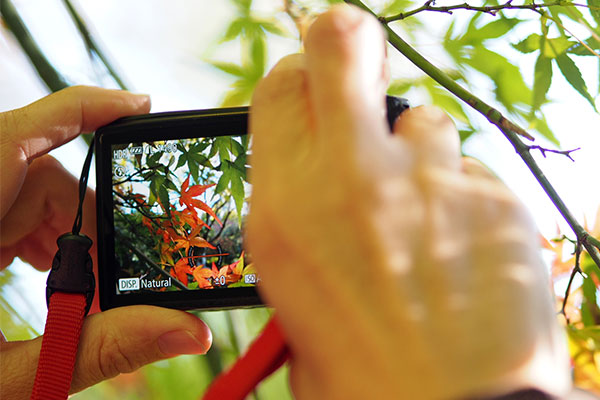Digital cameras buying guide

Whether it’s a perfect sunset over that alpine lake or an action shot of your troop drenching the Scoutmaster with a bucket of icy river water, capturing the moment lets your memories live on in vibrant color.
Not so long ago, you had to carry lots of film and have plenty of cash to get your pictures developed. But things have changed. Just plug the digital camera into your computer. It’s like your own home photo lab.
“Digital makes photography easier and cheaper than ever before,” says professional adventure photographer Corey Rich. “Your ability to grow as a photographer is much greater now because you can see the photos instantly and there’s no limit to how many you can shoot.”
Sounds simple enough. First, though, you need a camera. Digital technology is changing so quickly these days it can be tough to keep it all straight. So we asked Rich to give us tips on how to shop for a new digital camera. Here’s what you need to know.
SIZE MATTERS
“The idea behind making great pictures is having the camera with you all the time,” Rich says. “If a camera is big and cumbersome, more often than not it’ll get left behind.”
Stick with pocket-size cameras, also known as point-and-shoots. Look for a camera that’s compact but still packed with plenty of features and a quality lens.
BE IMAGE CONSCIOUS
Digital images are made up of millions of tiny dots or pixels. In general, the more megapixels, the better the image quality. So that’s one common way to compare digital cameras. If you’re looking for quality prints from your images — especially those larger than 8 inches by 10 inches — avoid cameras with just 1 to 3 megapixels.
“Bottom line: you shouldn’t even consider a camera with less than 4 megapixels,” Rich says.
ZOOM ZOOM
If you plan on taking photos of wildlife, consider getting a camera with an adjustable zoom lens. Look for one with a minimum optical zoom of 3x. Some cameras boast of having “digital zooms,” but that just means the camera can crop the image down — not actually zoom in closer to the subject. For shooting close-ups, make sure your camera also has a macro focus mode.
DON’T LAG
One of the most frustrating problems with some digital cameras is a thing called lagtime, or the amount of time the camera takes to shoot the picture once you’ve pressed the button. It might not seem like a big deal, but even a second of lagtime is a big bummer when shooting action shots.
“If you’re really out there trying to capture moments, you don’t want lag time,” Rich says.
Pick a camera with a burst mode that lets you shoot multiple pictures in a row.
MAKE IT EASY ON ME
“Look for the most automated camera you can find,” Rich says. “It just makes your life easier.”
There’s nothing glorious about fiddling with manual controls, and fortunately many cameras let you choose from preprogrammed functions that will provide quality photos from most any environment or situation.
DURABILITY IS THE DEAL
If you plan to bring your camera on outings, look for one that is dust- and shock-resistant — maybe even waterproof if you’re around water a lot. If the camera says it’s weatherproof it should be able to handle rainstorms but not underwater photography. Also, some cameras can be paired with protective sleeves or cases for added durability.
“Most point-and-shoots are really designed to handle abuse,” he says.
WHAT IT COSTS
Prices continue to drop on digital cameras, so you should be able to find a quality one for less than $200. Look for better deals online but stay away from used cameras, like some you will find on eBay.
Digital cameras store images on memory cards (also known as flashcards). Your camera will probably come with one, but you’ll want to buy at least one or two extras so you can shoot lots of photos without always having to delete or download shots to empty your card. Rich recommends sticking with name-brand cards such as those made by Lexar and stick with flashcards with one gigabyte of memory or less.
“Don’t get lured into buying gigantic flash cards,” Rich warns. “It’s better to buy two. That way if one card breaks or gets wet, your pictures on the other card will be safe.”
I’m going to buy a camera soon, so this helps a LOT! I only have $150 to spend, so now I know what to buy!
I Got One For 08 christmas and it is awsome
For my birthday i got a GFM from mijer. 100 bucks and worth it !!!!
Its lightweight, small and easy to pack
sdboyscout,
My father has a Canon PowerShot A650 (he got it in Japan)
camraguy the sony sibershot is a better camra than the conon powershot
Hockeyking 14 is right (I have one of the Finepix cameras from Fujifilm)
Nikkons rock
Yeah I’m the one that wants to make videos and this helps with what kind to get.
I got a sony camera i don’t know what model it was 200 bucks but its awesome and its from four years ago its so compact compared to today’s its got 8 mega pixels and dropped it a good amount of times it only takes the regular memory stick not the pro but i have an adapter so i’m covered
i got a FUJIFILM FINEPIX and is great and cheap